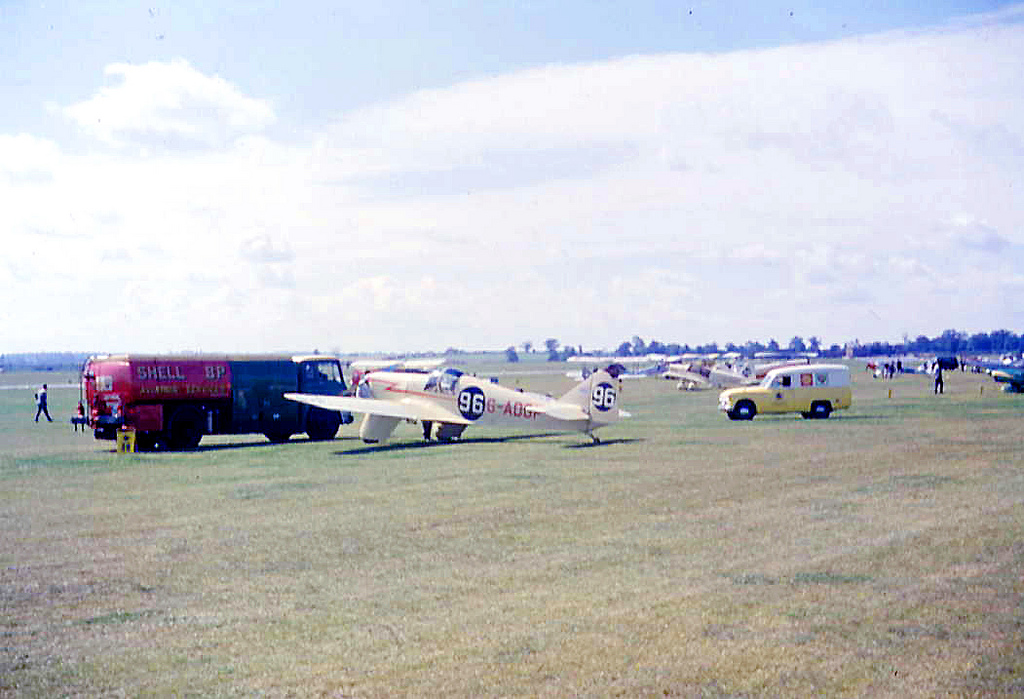1922 – King’s Cup Race
Like most of the early air races, the King’s Cup Race was established to encourage the development of aircraft. The King’s Cup Race is an annual handicapped* cross-country air race run by the Royal Aero Club. The first King’s Cup Race took place in 1922. Founded by King George V, the first race was 810 miles long from Croydon Aerodome (South London) to Glasgow, Scotland and back. Contestants would spend the night in Glasgow before making the return trip. The race was initially only open to British aircraft, but was opened to international contestants in 1961. The King’s Cup Race has taken place every year since 1922, minus a WWII hiatus and a cancelled 1951 race due to weather. Since 2012, competitors have taken off from Shobdon Aerodome near Leominster, Herefordshire, England. Check out this footage of the 1934 King’s Cup Race: https://www.youtube.com/watch?v=IizI6j_6Ss8
*handicapped racing uses a scoring system that attempts to put everybody’s aircraft on the same level in order to reward the best pilot, not the best plane
1927 – Dole Derby
In 1927, James Dole (the Hawaiian “Pineapple King”) offered $25,000 to the first fixed-wing aircraft that completed the flight from Oakland, California to Honolulu, Hawaii. The event ended up being a complete disaster as 3 of the 11 competitors crashed and died before the race even began. Leaving eight to participate, two crashed on takeoff, two went missing during the race, and one went to search for the missing planes and never returned. A total of 10 lives were lost, though two planes ended up landing in Hawaii safely. Goebel and Davis won the Dole Derby after 26 hours and 17 minutes on a plane called “Woolaroc,” winning the $25,000 cash prize. The winning plane survived, and can be found today at the Woolaroc Museum in Oklahoma.

1929 – Challenge International de Tourisme
The FAI International Tourist Plane Contest, or Challenge International de Tourisme in French, was a series of four events that took place between 1929 and 1934. The competitors flew popular sport planes of the late 1920s, including the de Havilland Gipsy Moth (DH-60G), the Avia BH-11B, the BFW M.23b and the Klemm L.25/L.26. Since one of the major objectives of the race was to generate progress in aircraft construction, technical trials were an important component of a competitor’s final score. Aircraft would be scored on construction, including the addition of extra features like twin controls, wheel brakes, fire safety features and parachute inclusion. Planes would be scored on wing folding, quick engine starting and fuel consumption, as well. After technical trials, competitors would complete a rally over Europe to be scored on consistent cruise speed, regularity of flight and a lack of major repairs. The winner of the Challenge International de Tourisme was awarded 100,000 francs.
1929 – Thompson Trophy
From 1929 to 1961, the National Air Races included the Thompson Trophy race, a 10-mile-long race with 50-foot-high pylons. The race emphasized low altitudes and high-speed turns on a closed course. From 1929 to 1939, the Thompson Trophy was presented to the winner of the “unlimited” class at the National Air Races. As was the case for most air races at the time, the Thompson Trophy was suspended during WWII, but picked back up after the war. The improved technology forced the Thompson Trophy series to modify its divisions, switching from the “unlimited” class to two separate divisions: the R division, which was for civilians flying piston engine aircraft, and the J division, which was for military pilots in jet-powered air craft. To give an idea of how much technology changed over the lifetime of the Thompson Trophy, in 1929, the average speed of the winner was 194.5 mph. The winner of the final race in 1961 averaged 1,302 mph.

1929 – Women’s Air Derby
The Women’s Air Derby, more commonly known as the Powder Puff Derby, was the first official all-female air race in the United States. The race took place in 1929 during the National Air Races, where 19 pilots departed from Santa Monica, California for Cleveland, Ohio for a $25,000 prize. Each pilot was required to have at least 100 hours of solo flight under her belt, including 25 hours of cross-country flight. In addition, each aircraft was required to have horsepower “appropriate for a woman.” Opal Kunz’s personal aircraft was disallowed, because its 300hp engine was considered too fast for a woman to fly. One of the pilots in the Women’s Air Derby happened to be Amelia Earhart who finished in third.
[ulp id=’xkA7bnsbSMSAnwAm’]

